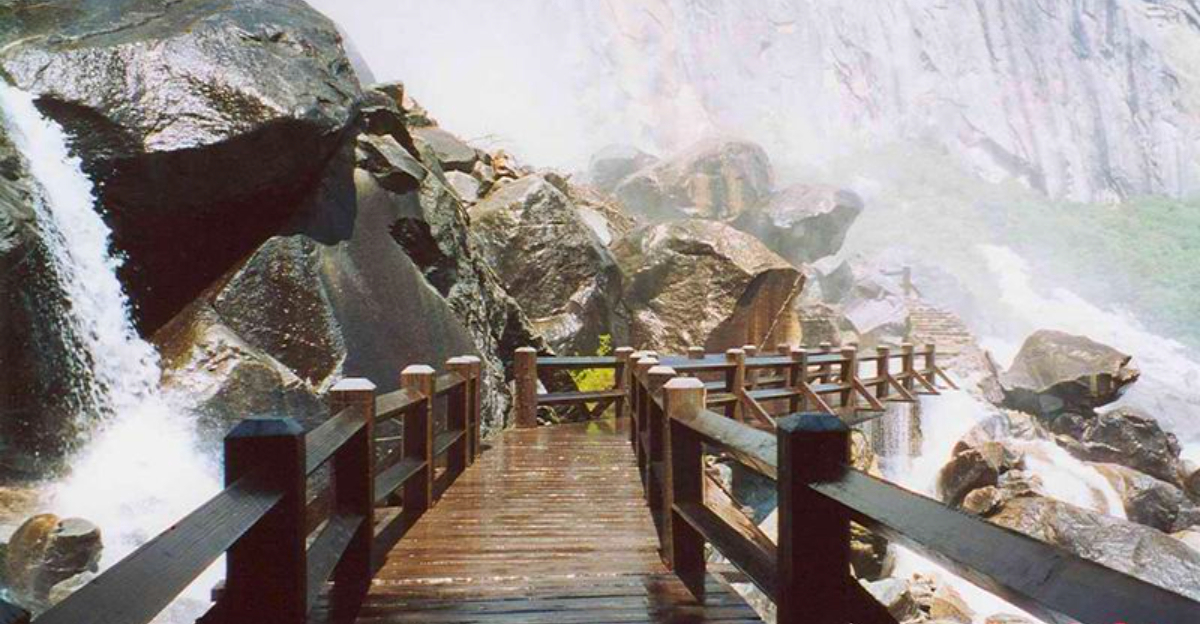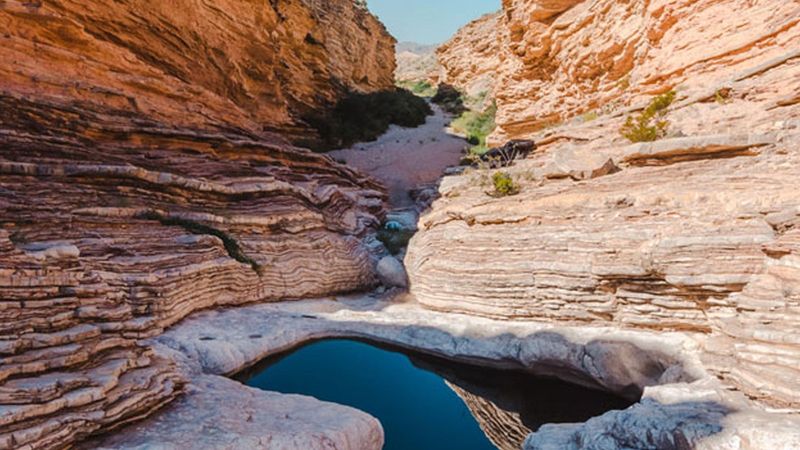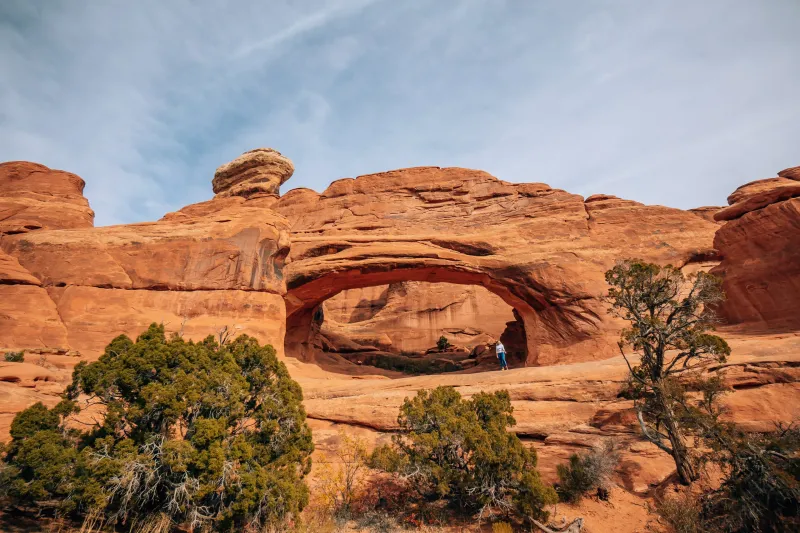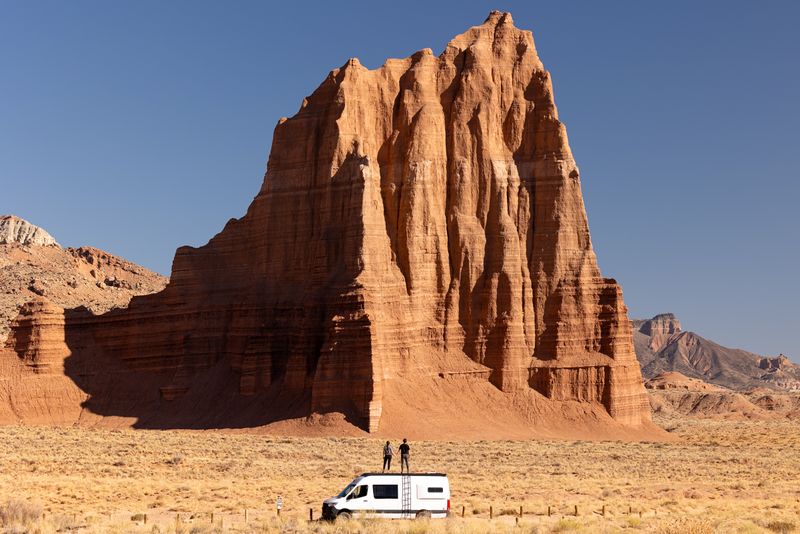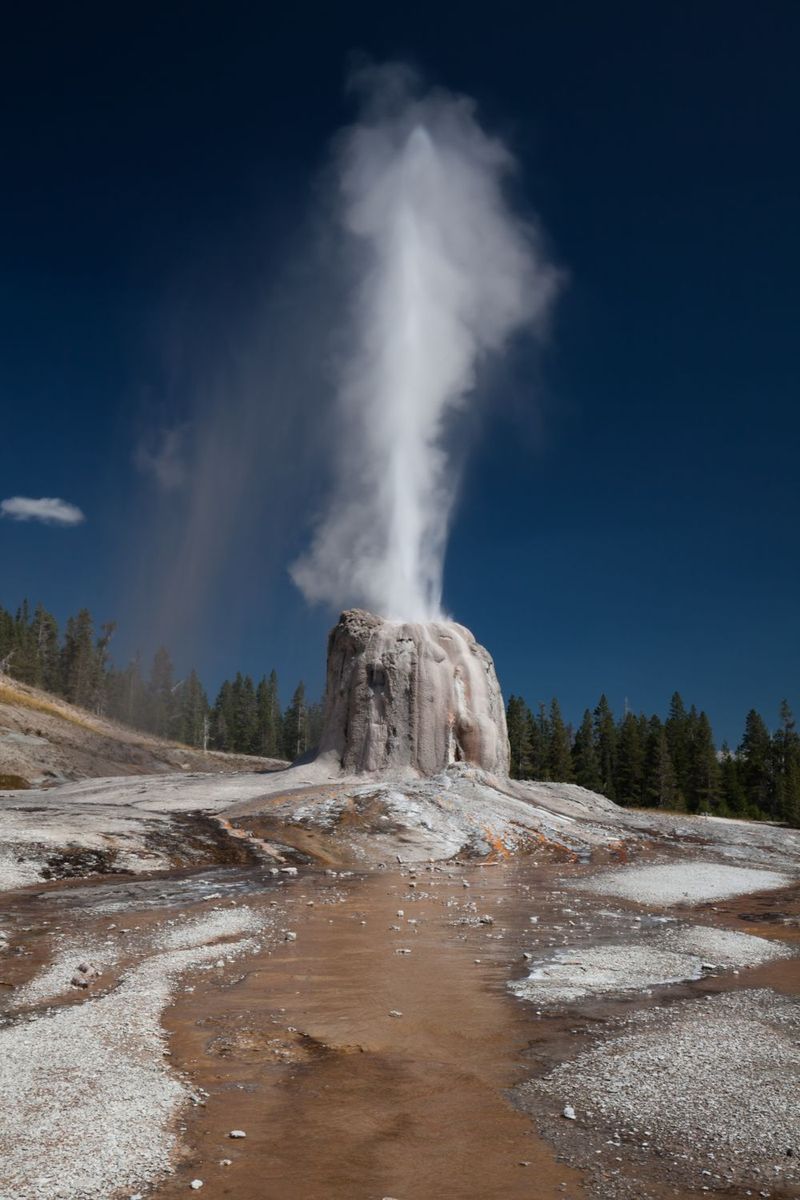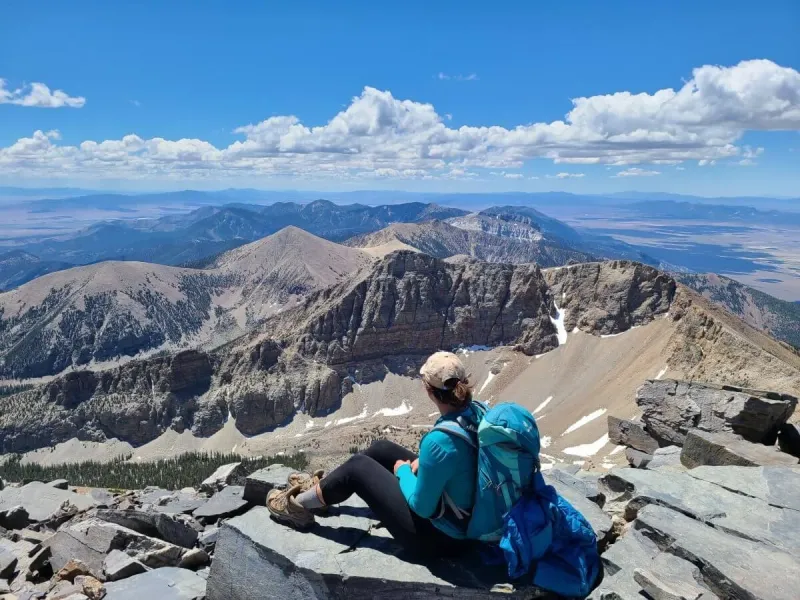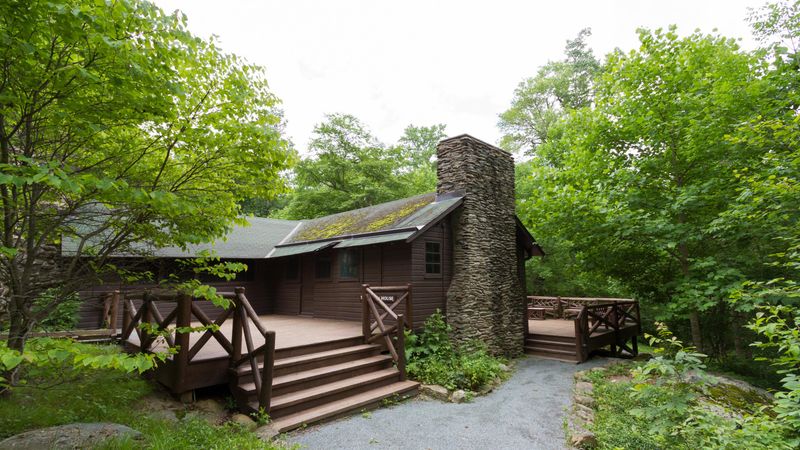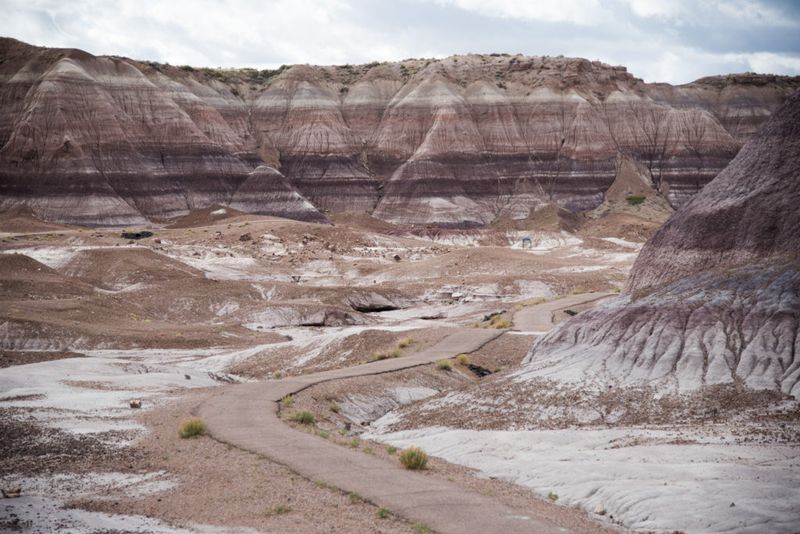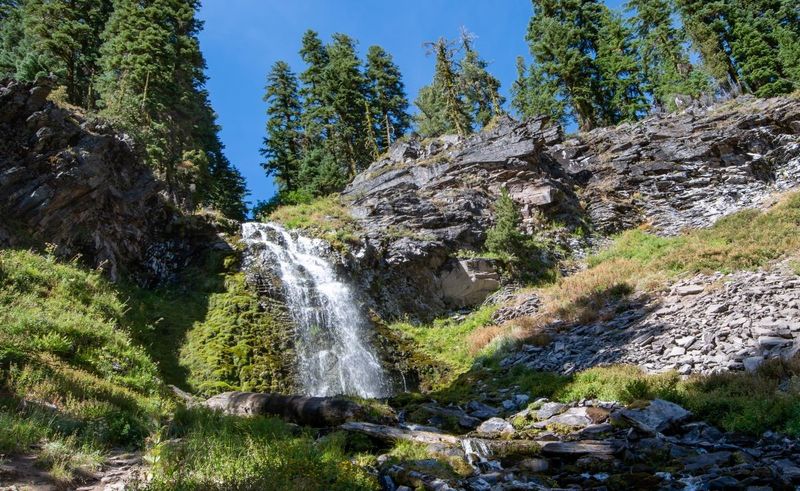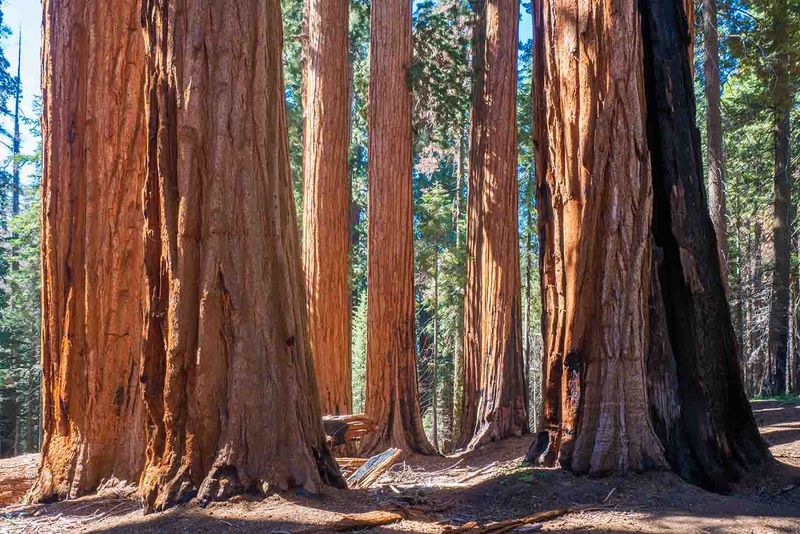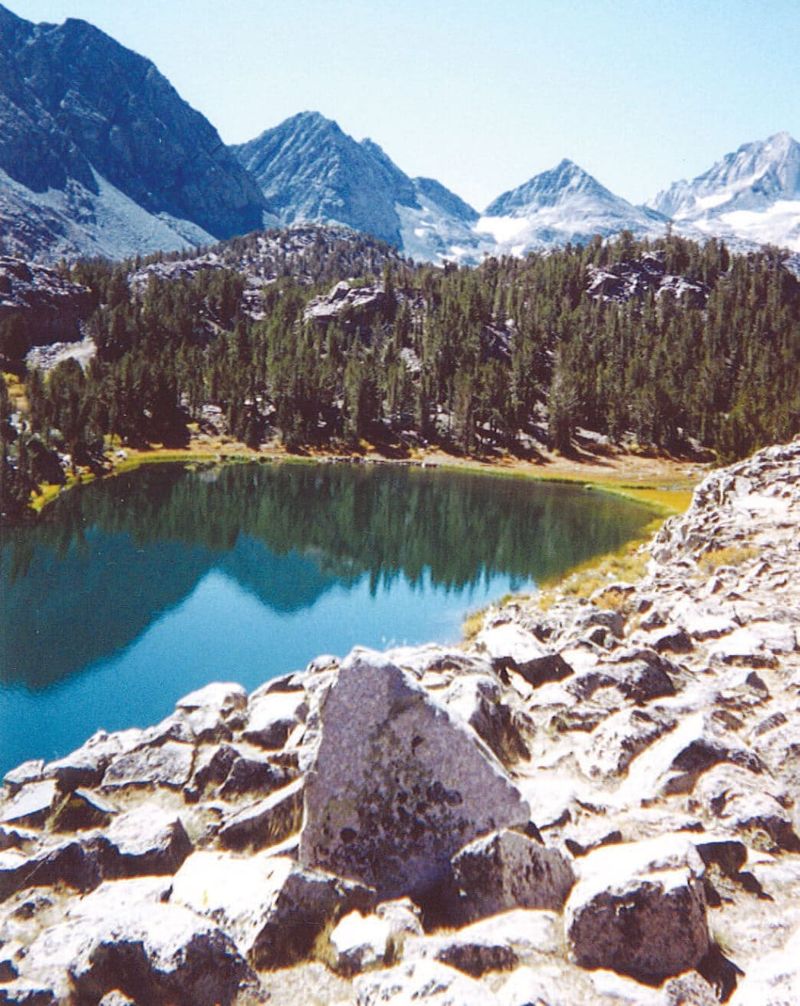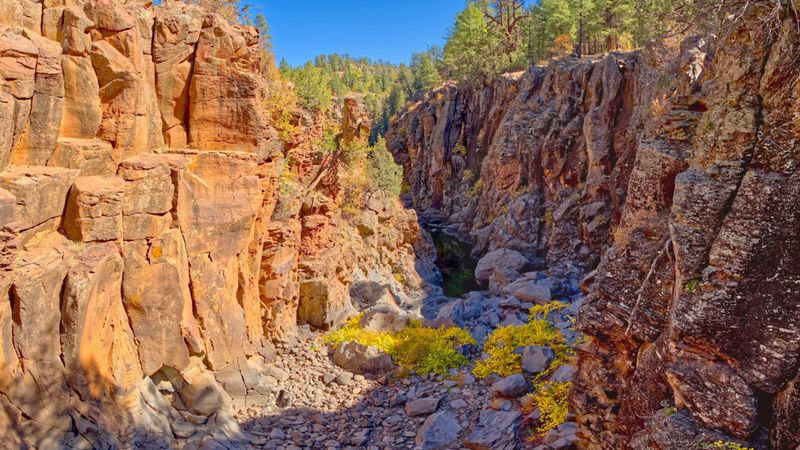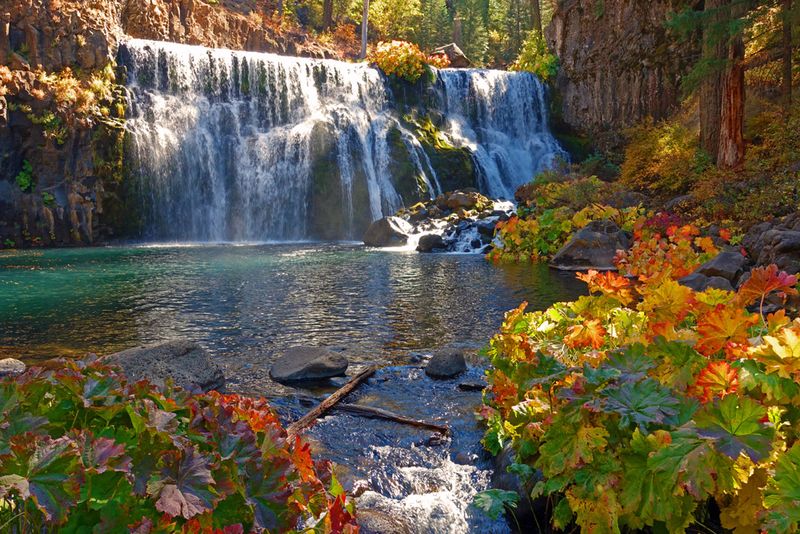America’s national parks hold secrets beyond the postcard-perfect overlooks and crowded trails. While millions flock to Old Faithful and Half Dome each year, countless extraordinary places remain tucked away, waiting for curious explorers to discover them. This guide reveals twenty remarkable spots, from hidden waterfalls to ancient lava tubes that offer solitude, adventure, and memories you won’t share with tour-bus crowds.
1. Ernst Tinaja — Big Bend National Park, TX
Deep in Big Bend’s backcountry, a dramatic slot canyon cradles a natural water pocket carved over millennia. Ernst Tinaja collects precious desert rainfall in a basin ringed by ancient limestone walls studded with fossils from a prehistoric sea.
Getting there requires navigating Old Ore Road, a rough track best suited for high-clearance vehicles. The short hike rewards hardy visitors with stunning geology and rare solitude.
Always check park alerts before heading out—Big Bend occasionally closes areas during storms or aerial operations. Pack plenty of water, wear sturdy boots, and give yourself time to marvel at layers of Earth’s history pressed into stone.
2. Cedar Creek Canoe Trail — Congaree National Park, SC
Paddle beneath a cathedral of ancient cypress trees on one of the Southeast’s most peaceful waterways. Cedar Creek’s tannin-stained water reflects towering trunks and moss-draped branches, creating an otherworldly atmosphere.
Congaree publishes water-level gauges online, so you can plan your float when conditions are ideal. Low water can mean portaging; high water brings swift currents and excitement.
Rent a canoe locally or bring your own, and glide quietly past herons, turtles, and the occasional otter. This is old-growth forest best experienced from water level, where time seems to slow and the outside world fades away.
3. Tower Arch — Arches National Park, UT
Most visitors never venture into the Klondike Bluffs area, making Tower Arch one of Arches’ best-kept secrets. The trail weaves between towering sandstone fins before revealing a graceful arch framing desert sky.
Reaching the trailhead means bumping along roughly eight miles of unpaved road—worth every rattle for the solitude you’ll find. Spring and fall offer the best conditions; summer heat can be brutal.
Bring plenty of water and watch for cairns marking the sandy path. The arch itself invites exploration underneath, where cool shade and smooth stone create a natural resting spot far from the park’s famous—and famously crowded—formations.
4. Cathedral Valley (Temple of the Sun & Moon) — Capitol Reef, UT
Cathedral Valley feels like another planet. Massive monoliths—nicknamed Temple of the Sun and Temple of the Moon—rise abruptly from a vast, empty valley floor, their red sandstone glowing against endless sky.
This remote district requires high-clearance vehicles and careful attention to weather. Summer thunderstorms can render roads impassable; check conditions at the visitor center before attempting the loop.
The reward is a landscape so alien and untouched you might be the only soul for miles. Pack a lunch, bring binoculars, and take your time absorbing the scale and silence of these ancient stone giants.
5. Baskins Creek Falls — Great Smoky Mountains NP, TN
While crowds pile up at popular waterfalls, Baskins Creek tumbles quietly through a forested hollow off Roaring Fork Motor Nature Trail. The hike follows an old homesite path through rhododendron tunnels before arriving at the cascade.
With Laurel Falls closed for rehabilitation until 2026, this makes an excellent alternative for waterfall lovers seeking peace. The trail can be muddy and rocky, so wear good boots.
Spring brings wildflowers and high water flow; autumn paints the forest in gold and crimson. Listen for the rush of water growing louder as you descend, and savor having this Smoky Mountain gem almost entirely to yourself.
6. Wapama Falls via Hetch Hetchy — Yosemite NP, CA
Hetch Hetchy, Yosemite’s quieter valley, offers granite domes and waterfalls without the elbow-to-elbow crowds. The trail to Wapama Falls hugs the reservoir shore, passing through tunnels blasted from rock and crossing bridges beneath thundering cascades.
Spring runoff turns Wapama into a roaring torrent that can drench hikers on the footbridge—bring rain gear and embrace the spray. Later in summer, flows diminish but the hike remains beautiful.
This corner of Yosemite sees a fraction of valley visitors, yet delivers the same stunning Sierra scenery. Pack snacks, start early to beat afternoon heat, and enjoy Yosemite the way it used to be.
7. Lone Star Geyser — Yellowstone NP, WY
Skip the boardwalk circus at Old Faithful and bike or hike five miles to a backcountry geyser that erupts on a roughly three-hour cycle. Lone Star’s graceful cone sits in a quiet meadow, far from parking-lot chaos.
Check the logbook at the site to estimate the next eruption, then settle in to watch. The show lasts about thirty minutes, shooting water high into the air with rhythmic bursts.
Remember: thermal features are deadly. Stay on trails and boardwalks, never touch crusts, and keep children close. This is Yellowstone’s wild heart, where geothermal power still rules and patience brings unforgettable rewards.
8. Wheeler Peak Glacier (Rock Glacier) — Great Basin NP, NV
Nevada’s last glacier clings to the north face of Wheeler Peak, a remnant of the Ice Age surviving in a sheltered cirque. The moderate alpine hike passes ancient bristlecone pines—some over 4,000 years old—before climbing to the glacier overlook.
Great Basin sees few visitors compared to western parks, making this treasure even more special. The high elevation means cooler temps; bring layers even in summer.
Stand among twisted bristlecones and gaze at Nevada’s icy secret, pondering the millennia these trees have witnessed. It’s a humbling reminder that even deserts hold frozen mysteries, if you know where to look.
9. Rapidan Camp — Shenandoah NP, VA
President Herbert Hoover escaped Washington’s heat at this rustic mountain retreat, and you can still visit the preserved camp via a pleasant forest trail. The buildings sit beside Laurel Prong, offering a glimpse into 1930s presidential relaxation.
Seasonal ranger tours bring the site’s history alive, or explore independently with interpretive signs. The hike in is moderate, shaded, and lovely year-round.
Imagine a president fishing these streams and hosting dignitaries in simple cabins, far from the Oval Office. Rapidan Camp reminds us that even leaders craved Shenandoah’s peaceful hollows and the quiet company of mountains.
10. McKittrick Canyon to Pratt Cabin & The Grotto — Guadalupe Mountains NP, TX
West Texas hides a surprise: a canyon that explodes with autumn color rivaling New England. McKittrick Canyon’s maples, oaks, and ashes turn gold and crimson each fall, framing a clear stream and limestone walls.
Hike to Pratt Cabin, a stone structure with a porch perfect for lunch, then continue to The Grotto, where water has carved sinuous alcoves in the rock. This park sees far fewer visitors than its famous neighbors.
Time your visit for late October or early November to catch peak color. Bring plenty of water—West Texas is still desert—and relish this hidden oasis where fall foliage thrives against all odds.
11. Blue Mesa Loop — Petrified Forest NP, AZ
Most visitors speed through Petrified Forest, snapping quick photos from overlooks. Those who take the short Blue Mesa Loop paved trail descend into a wonderland of blue-purple badlands and rainbow-hued petrified logs.
The bentonite clay hills glow in shades of lavender, indigo, and ash, especially under afternoon light. Ancient trees turned to stone lie scattered like discarded treasures.
This easy walk takes under an hour but feels like exploring an alien planet. Bring your camera, watch for ravens riding thermals overhead, and remember: leave the petrified wood where it lies—it’s protected, and every piece tells a 200-million-year-old story.
12. Plaikni Falls — Crater Lake NP, OR
While tourists cluster around Crater Lake’s famous rim, a gentle forest trail leads to Plaikni Falls, a lush cascade tucked in the woods. The easy one-mile path winds through mountain hemlock and wildflower meadows.
The falls themselves tumble over mossy rock into a cool grotto, creating a peaceful spot to rest and listen to the water’s music. Snow lingers late here; check seasonal road closures.
Visit in July or August when wildflowers bloom and access is reliable. This is Crater Lake’s softer side—no vertiginous cliffs, just forest serenity and the gentle soundtrack of falling water welcoming those who seek it out.
13. Cave Spring Trail — Canyonlands NP (Needles), UT
Canyonlands’ Needles district already sees fewer visitors, and Cave Spring Trail hides even further off the radar. This compact loop packs in ladders, rock alcoves, pictographs, and a preserved cowboy camp—all in under a mile.
The spring itself creates a shaded microclimate where plants thrive. Wooden ladders help you scramble up slickrock, adding a touch of adventure suitable for most ages.
Respect the historic artifacts and rock art; they’re irreplaceable windows into past lives. This trail proves you don’t need epic distances to experience Canyonlands’ magic—sometimes the best stories hide in the smallest packages.
14. Muir Grove — Sequoia NP, CA
Giant Forest and General Sherman draw the crowds, but Muir Grove offers giant sequoias in blissful solitude. The gentle trail from Dorst Campground winds through mixed forest before arriving at a cathedral of massive trees.
You might have the grove entirely to yourself—a rare gift in a popular park. Walk among giants that were saplings when Rome fell, their cinnamon bark glowing in filtered sunlight.
John Muir would approve of this quieter sanctuary. Bring a journal or just sit in silence, absorbing the scale and age of these living monuments. Sometimes the best treasures are those you have to walk a little farther to find.
15. Staircase Rapids — Olympic NP, WA
Olympic’s southeast corner remains wonderfully overlooked. Staircase Rapids showcases the park’s signature blend: moss-draped old-growth forest and a turquoise river tumbling over polished stones.
The access road can close during winter storms, so check status before making the drive. When open, trails here offer solitude and the intoxicating scent of cedar and Douglas fir.
Follow the river upstream, watching water carve through rock and roots. Ravens call from the canopy, and if you’re lucky, elk browse in nearby meadows. This is Olympic at its most peaceful—no crowds, just wilderness and water.
16. Little Lakes Valley — Inyo National Forest (CA)
Starting from Mosquito Flat (one of California’s highest trailheads), this trail strings together jewel-like alpine lakes beneath soaring Sierra peaks. The relatively gentle grade makes stunning high country accessible to more hikers.
Each lake has its own character—some mirror granite walls, others hide in meadows bursting with summer wildflowers. The scenery rivals any national park, yet this gem belongs to the national forest system.
Altitude affects everyone differently; take your time and hydrate. The thin air and expansive views create an almost dreamlike experience. Pack a lunch and claim a lakeside boulder for one of California’s finest alpine picnics.
17. Ape Cave Lava Tube — Gifford Pinchot National Forest (WA)
Descend into one of North America’s longest lava tubes for a self-guided underground adventure. Ape Cave formed when Mount St. Helens erupted roughly 2,000 years ago, leaving a hollow tunnel through solid basalt.
Bring two light sources (headlamps work best) and a helmet—the ceiling is low in spots. The lower cave is easier; the upper route includes an eight-foot lava fall to scramble.
Summer weekends can be busy, so arrive early or visit midweek. The constant 42-degree temperature means layering up even in July. Exploring this volcanic underworld connects you to the raw power still simmering beneath the Pacific Northwest.
18. Sycamore Canyon Wilderness — Coconino National Forest (AZ)
Oak Creek gets all the attention, but neighboring Sycamore Canyon rivals it for beauty while offering far more solitude. This vast wilderness protects colorful cliffs, stone pinnacles, and rare riparian habitat.
Multiple trails explore the canyon’s depths and rims; some require permits or high-clearance access. Research your route and carry plenty of water—Arizona’s beauty comes with desert challenges.
Watch for black hawks, javelinas, and if you’re extraordinarily lucky, a Mexican wolf. Sycamore Canyon proves Arizona holds endless secrets for those willing to venture beyond the famous red rocks of Sedona into true wilderness.
19. McCloud River’s Three Falls — Shasta-Trinity National Forest (CA)
Near Mount Shasta’s snow-capped peak, the McCloud River delivers a trio of beautiful waterfalls connected by scenic trails. Lower, Middle, and Upper Falls each have distinct personalities, from gentle cascades to thundering plunges.
The short walks between falls wind through fragrant pine forest and offer swimming holes cold enough to take your breath away. Summer is perfect for combining waterfall viewing with a refreshing dip.
Pack a picnic and make a day of it, visiting all three falls and soaking in the mountain atmosphere. This Northern California treasure sees locals and savvy travelers, but never the crushing crowds of more famous destinations.
20. Ice Lake Basin — San Juan National Forest (CO)
Ice Lake’s impossibly blue water seems Photoshopped—until you stand gasping (from exertion and beauty) at its shore. The strenuous climb gains over 2,700 feet through wildflower meadows before revealing electric-blue tarns beneath jagged 13ers.
Post-fire hazards remain in some areas; check current conditions, especially after heavy rains. The San Juans are notoriously prone to afternoon thunderstorms, so start early.
The color comes from glacial minerals suspended in the water, creating an otherworldly hue that must be seen to be believed. Bring your camera, your toughest hiking legs, and prepare for Colorado high country at its most spectacular and rewarding.
